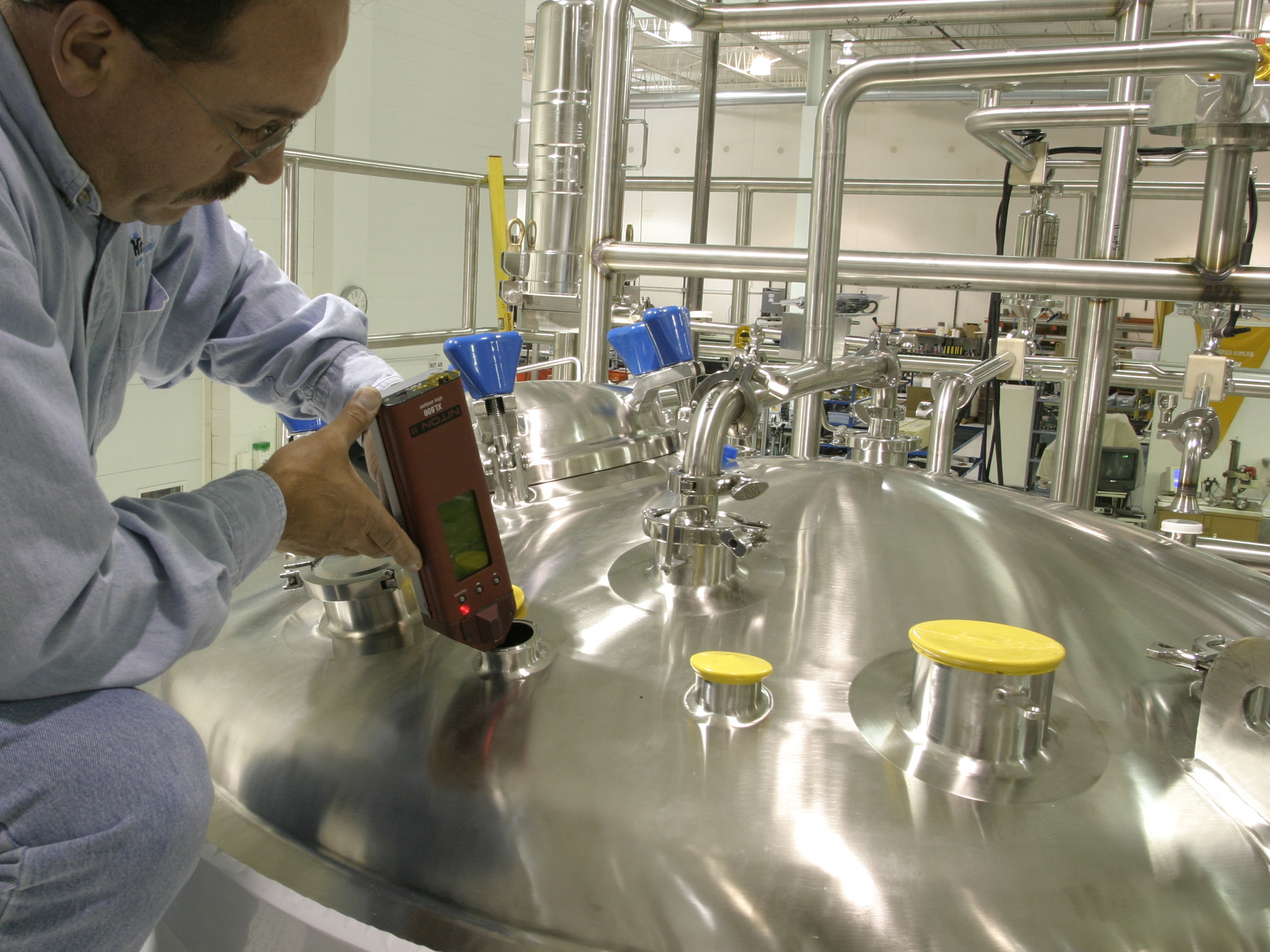What is Positive Material Identification (PMI) and How does it Relate to Sanitary Process Equipment?
With the naked eye, all stainless steel looks pretty much the same. You cannot tell the difference between 304 and 316L stainless just by looking at it. They even smell the same. This actually holds true for more noble alloys such as AL6XN and titanium as well. So how do you tell the difference between the metals if they are not labeled? We do positive metal identification tests (PMI) using X-ray Florescence.
X-ray Florescence is a non-destructive method of determining the elemental properties of a material. An XRF analyzer bombards high-energy X-rays against a material then reads the characteristics of secondary (fluorescent) X-rays emitted from the material. Each element in the material emits its own unique florescent X-ray spectrum, allowing it to be identified. We do this using a portable, handle held XRF gun.
Why is this important? As we stated above, most austenitic alloy material looks alike. We bought our first XRF tester over 15 years ago and started testing all raw and finished materials that came into our door. We were amazed at how many items that were supposed to be 316L stainless and turned out to be 304. A lot of times, packages marked and labeled 316 even turned out to be 304. This was not just raw materials. We have even found tanks that were 316L except for a man way collar or an inlet ferrule that were not.
Does this happen because suppliers are purposely shipping the wrong material? Probably not. It is mostly a case of suppliers not having strong materials management systems in place. Since we started implementing these testing procedures, many manufacturers of sanitary process components have done the same. Today we have worked to qualify vendors that have control of their materials and no longer need to test every fitting that comes in the door given that it came from one of those vendors. We still test all of the raw material that enters our facility, as well as purchased items such as vessels. This has become enough of a hot topic in biopharmaceutical manufacturing that many of our clients require 100% PMI testing on all materials we use in their sanitary fabrications and skidded systems.
What can’t XRF do? Measure carbon. It will not tell you whether an object is 316 or 316L. You still have to go by the certs to make that determination. Other than that it is a great tool to ensure you are getting what you have specified and paid for. The other downside to using XRF is the cost. A good handheld XRF gun costs over $20,000. But if you have a critical application or cater to the high purity industry, it is money well spent.
In our industry, the quality of the material a vendor puts on their systems and sends out their door is their reputation. Your reputation counts. At Holland, we stand behind all of our vendors and products because we know that our reputation depends on it. If you have any questions on this topic, contact us and we will discuss it with you in detail.









